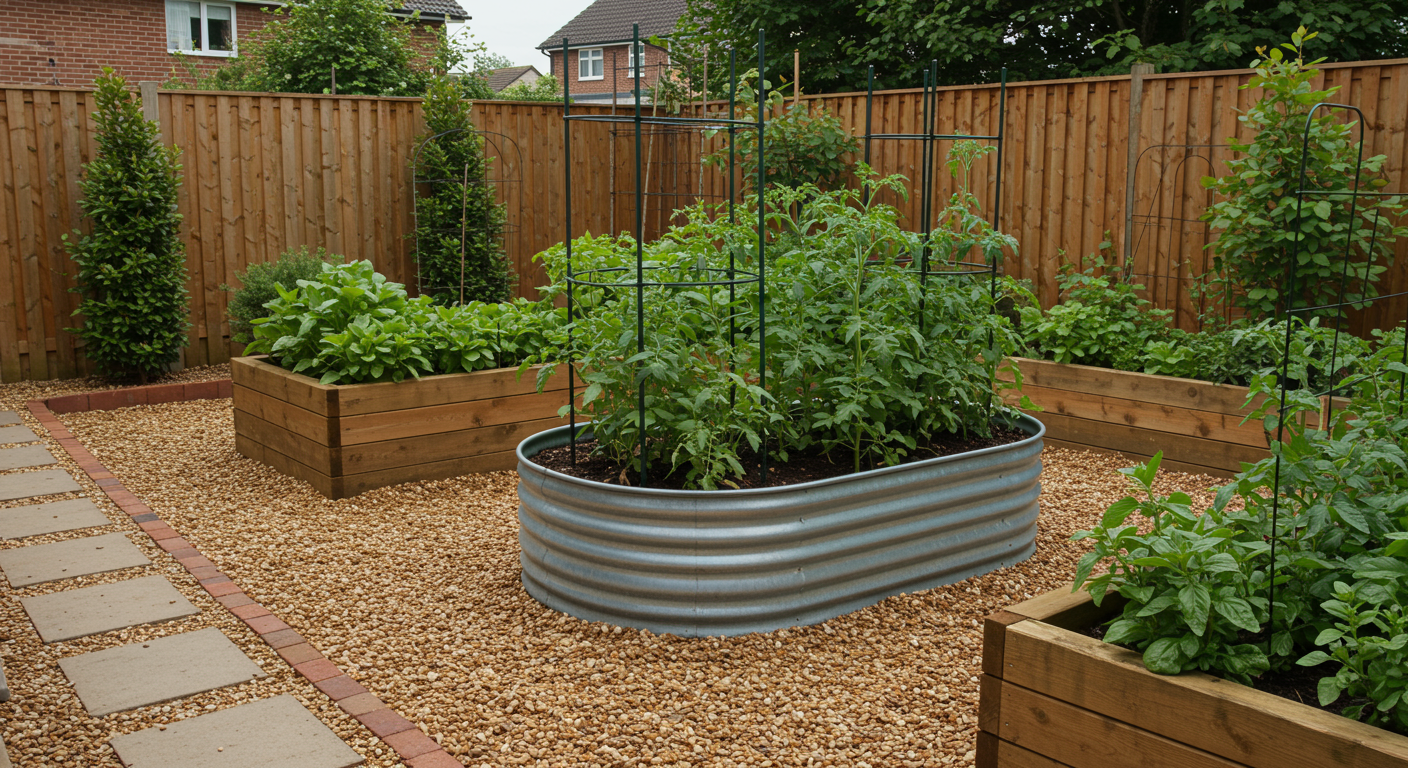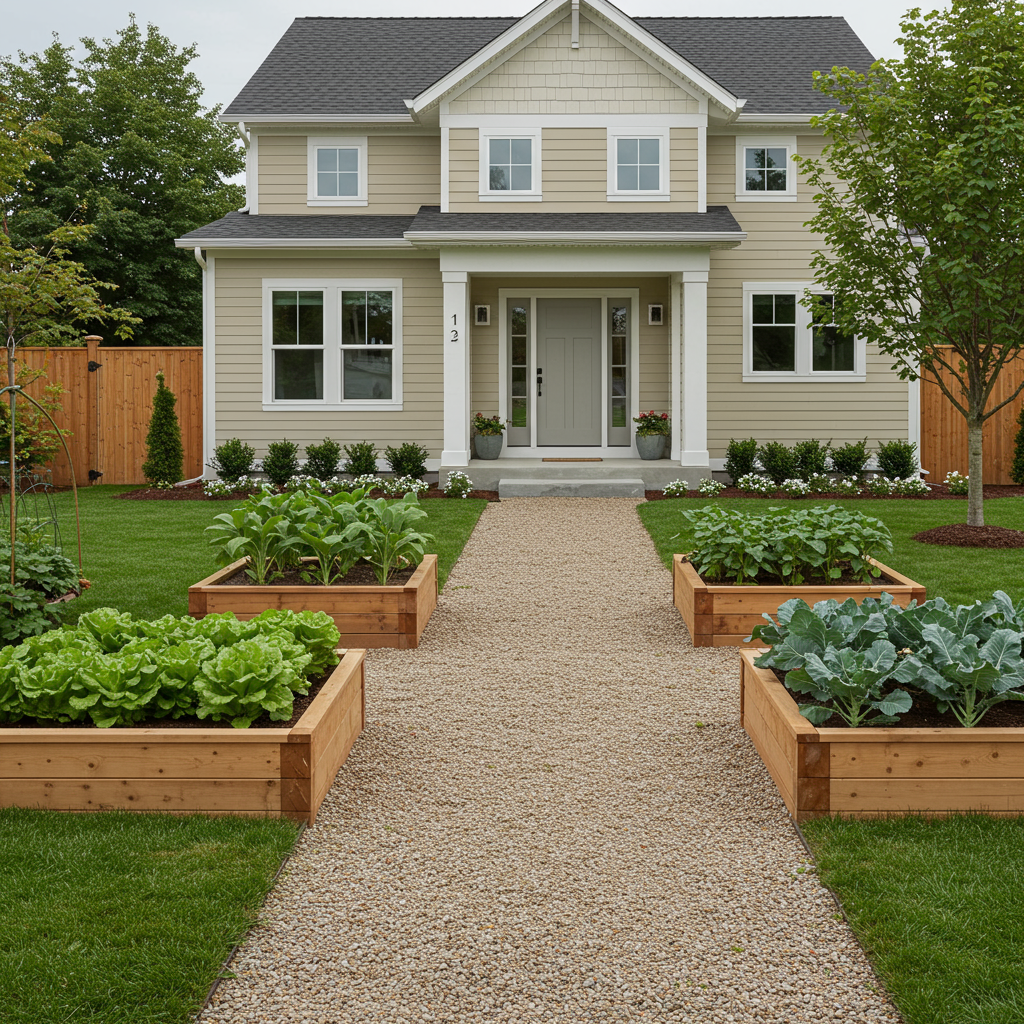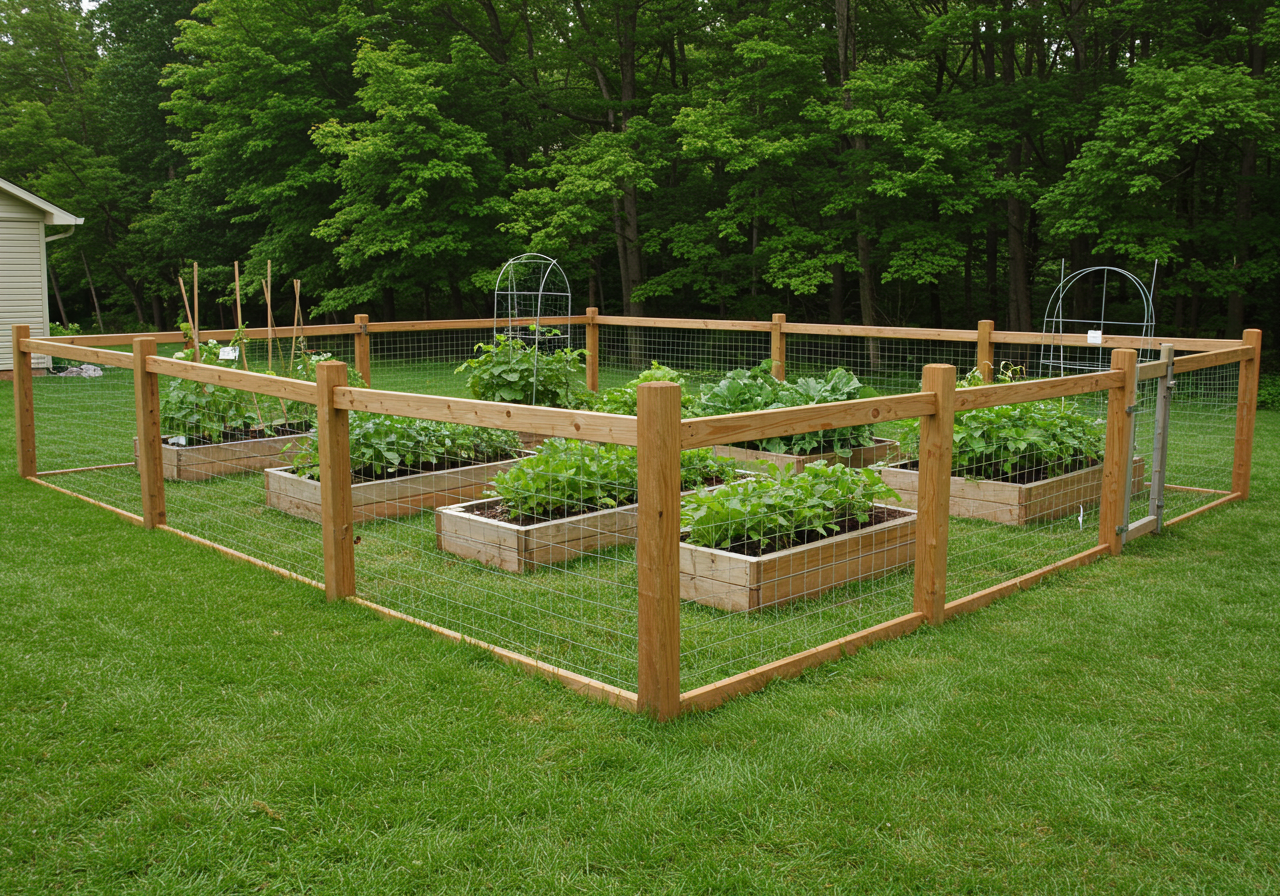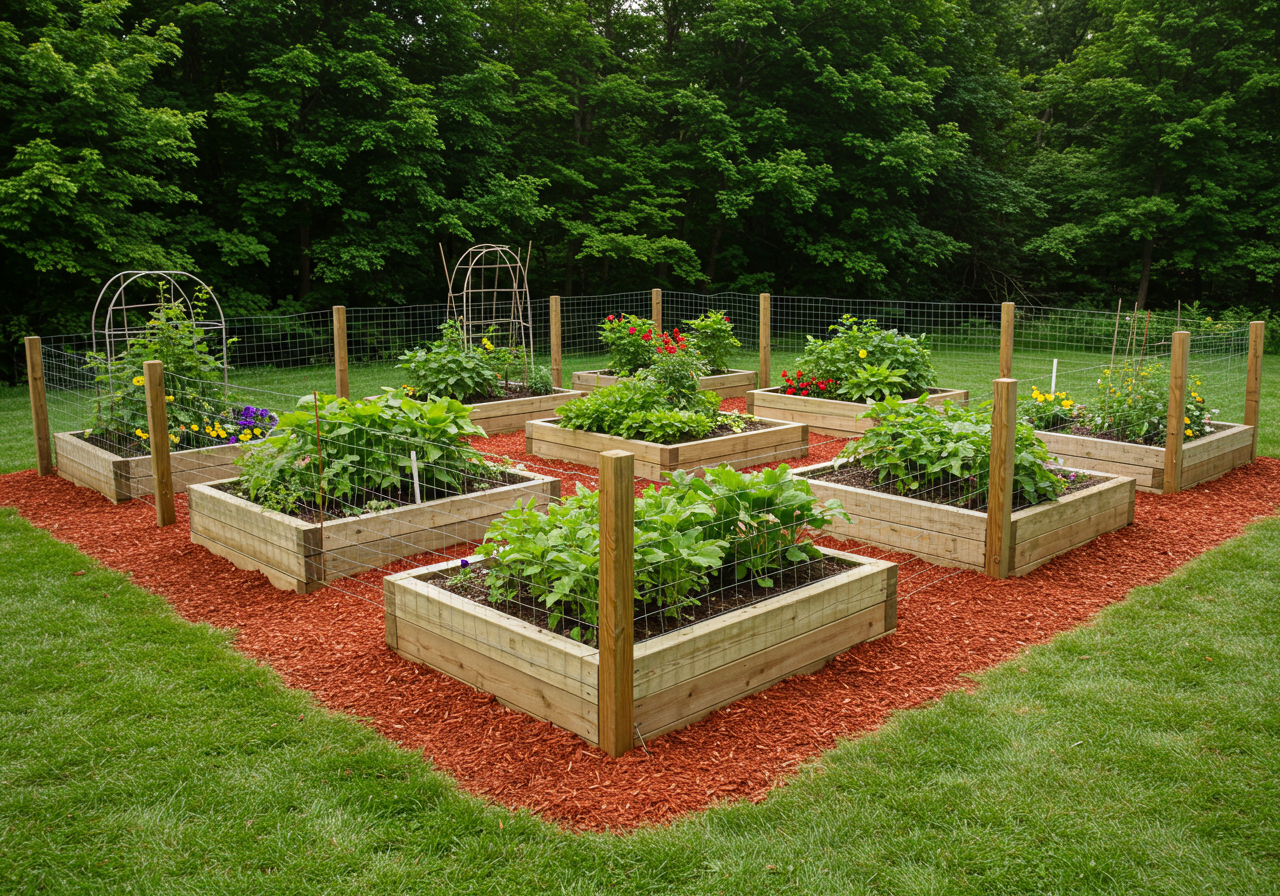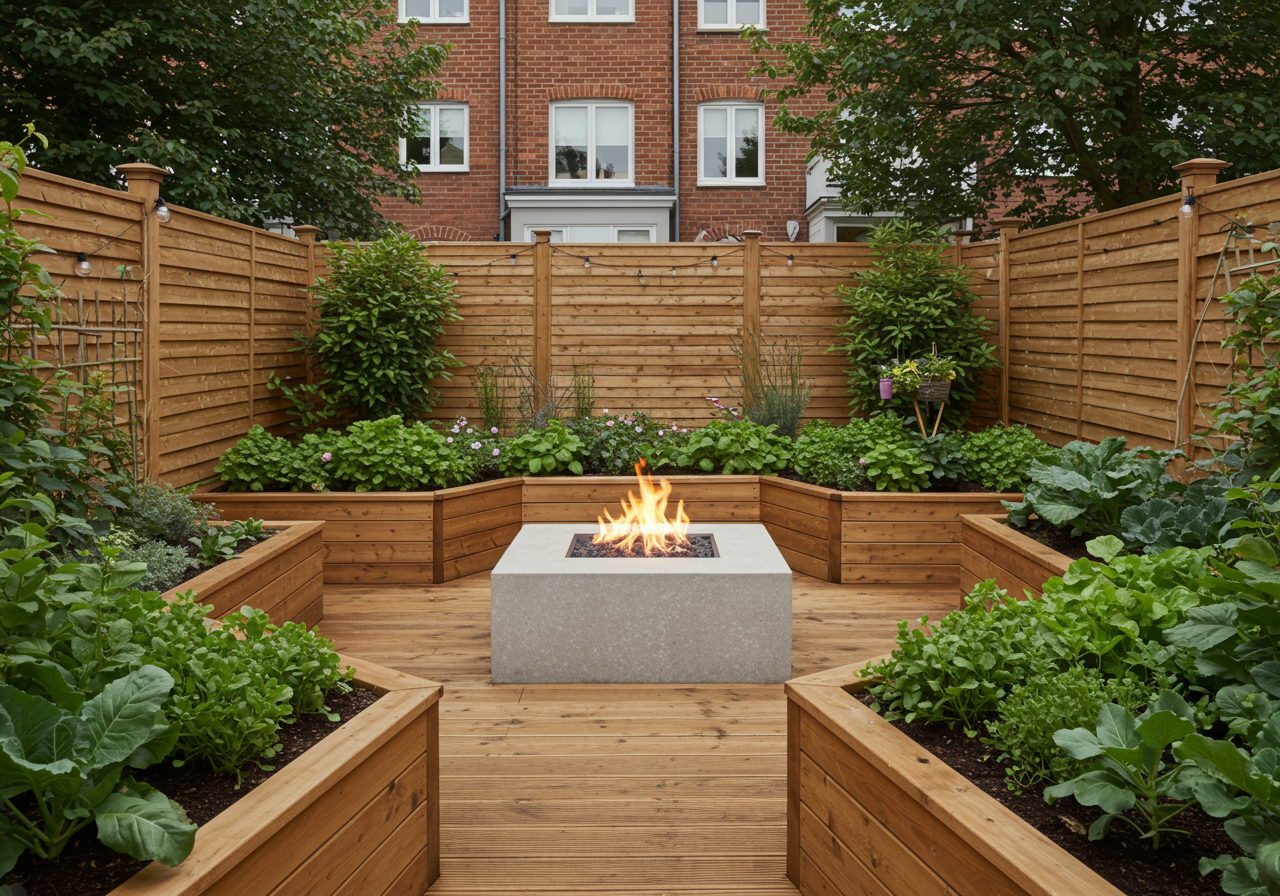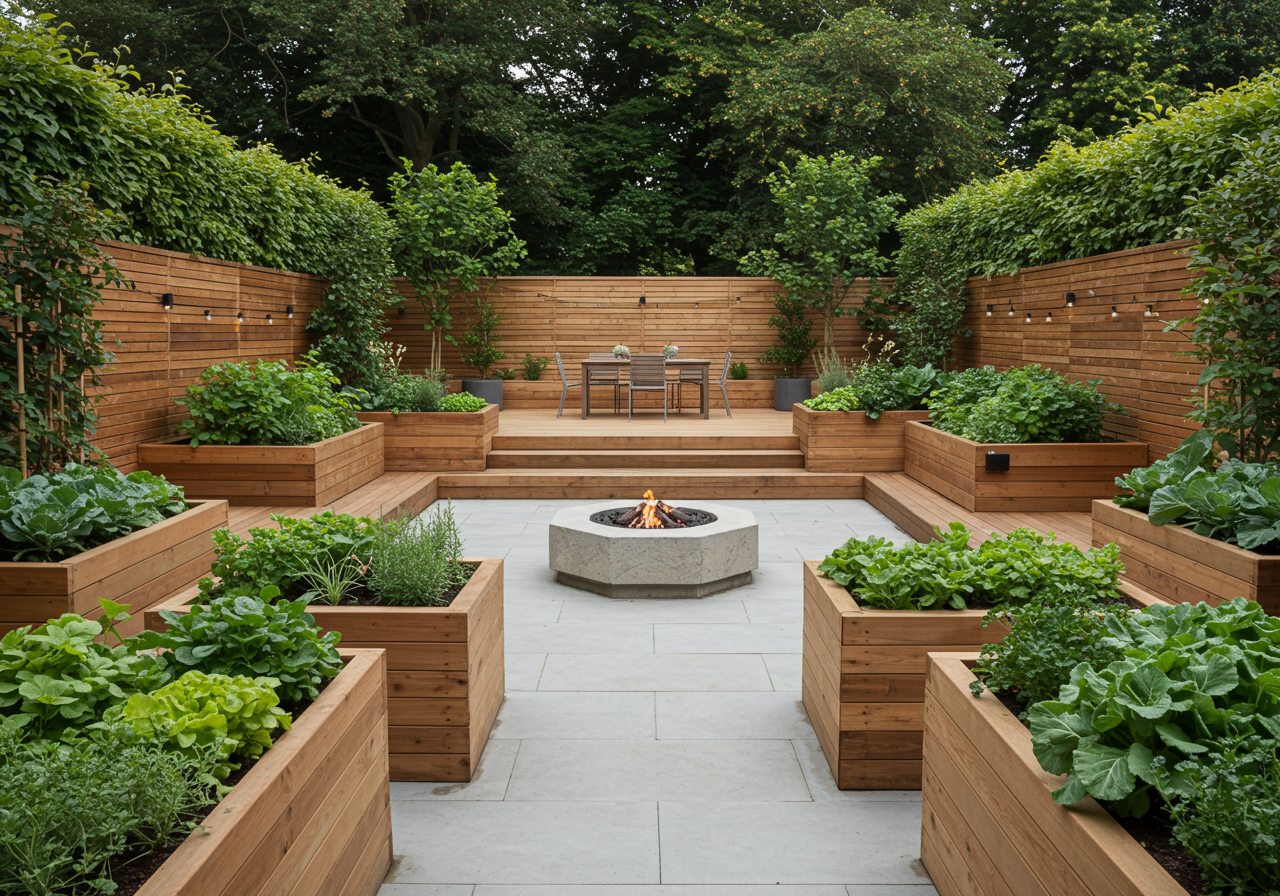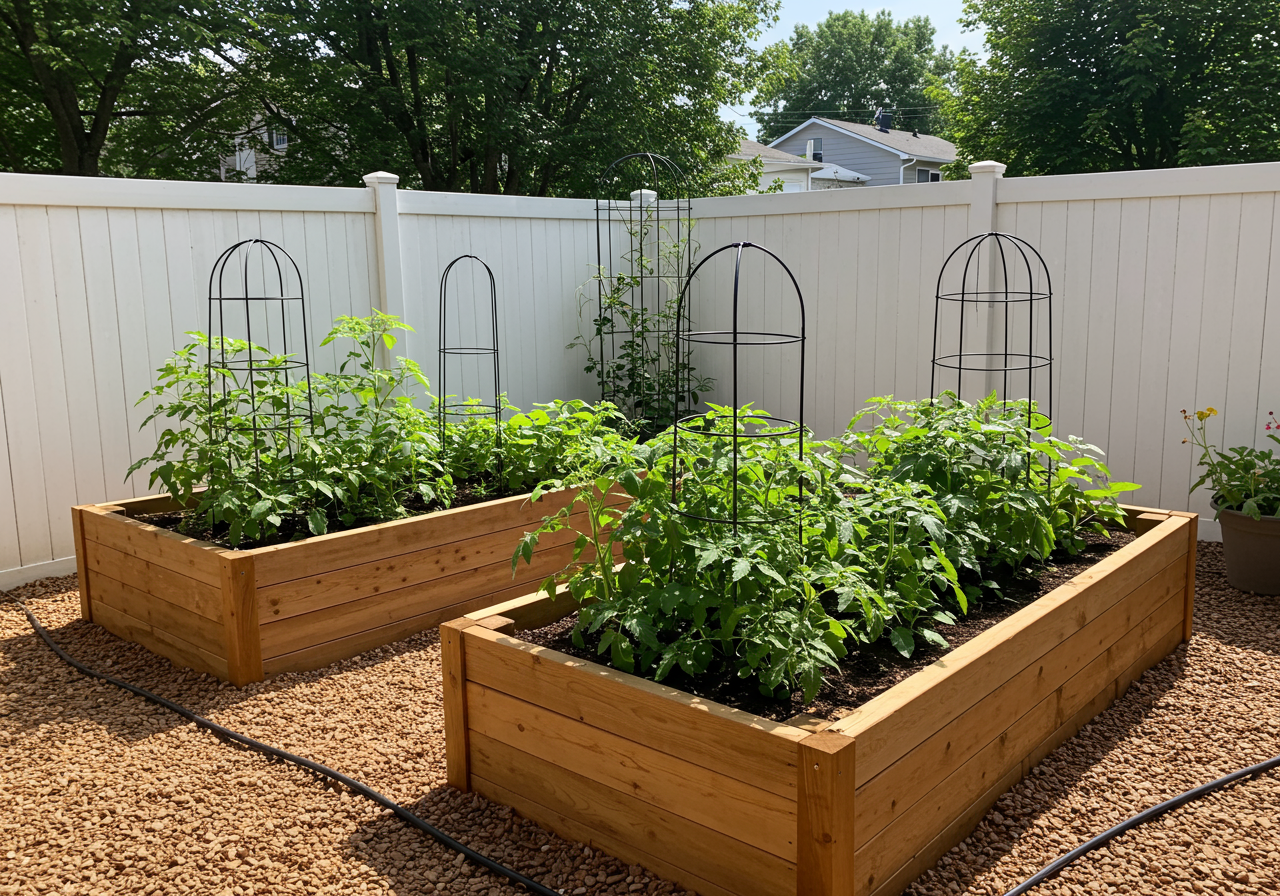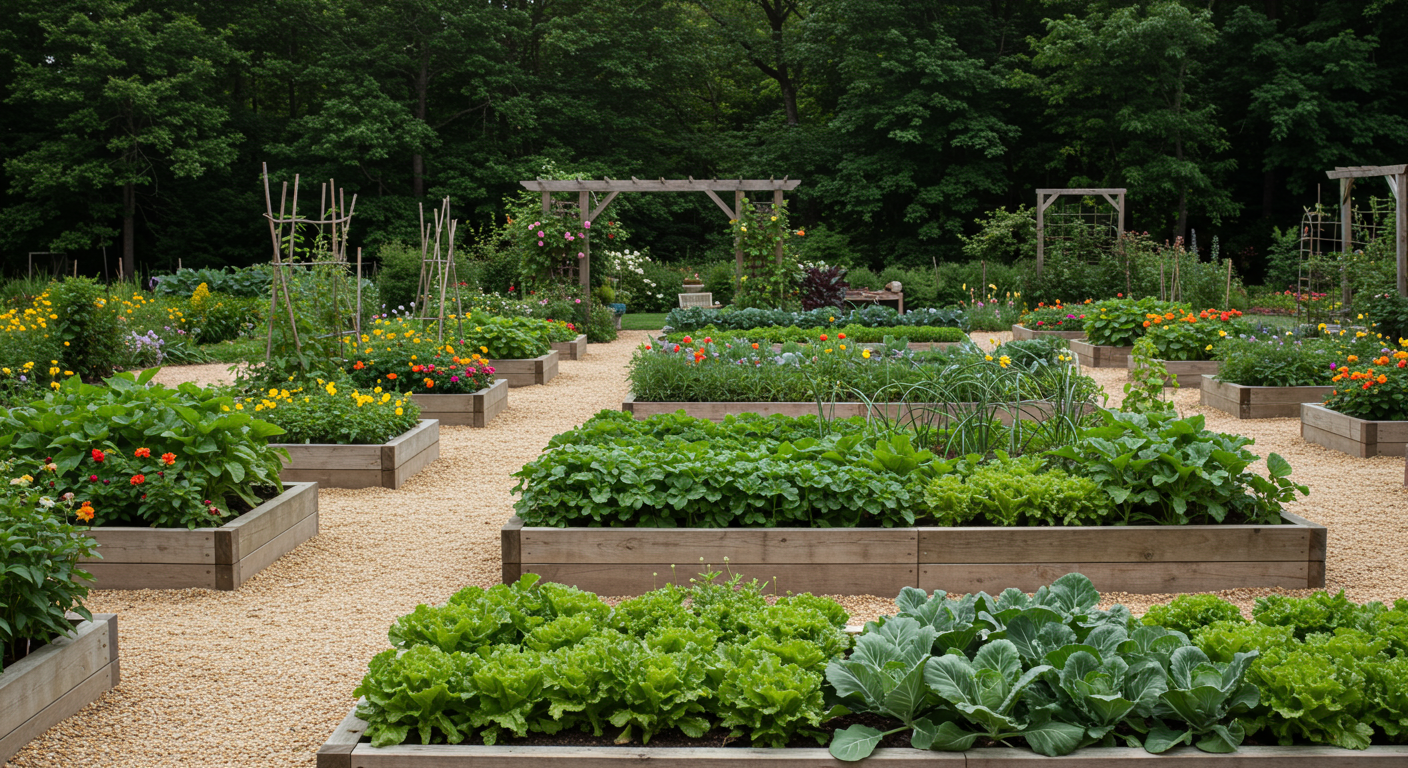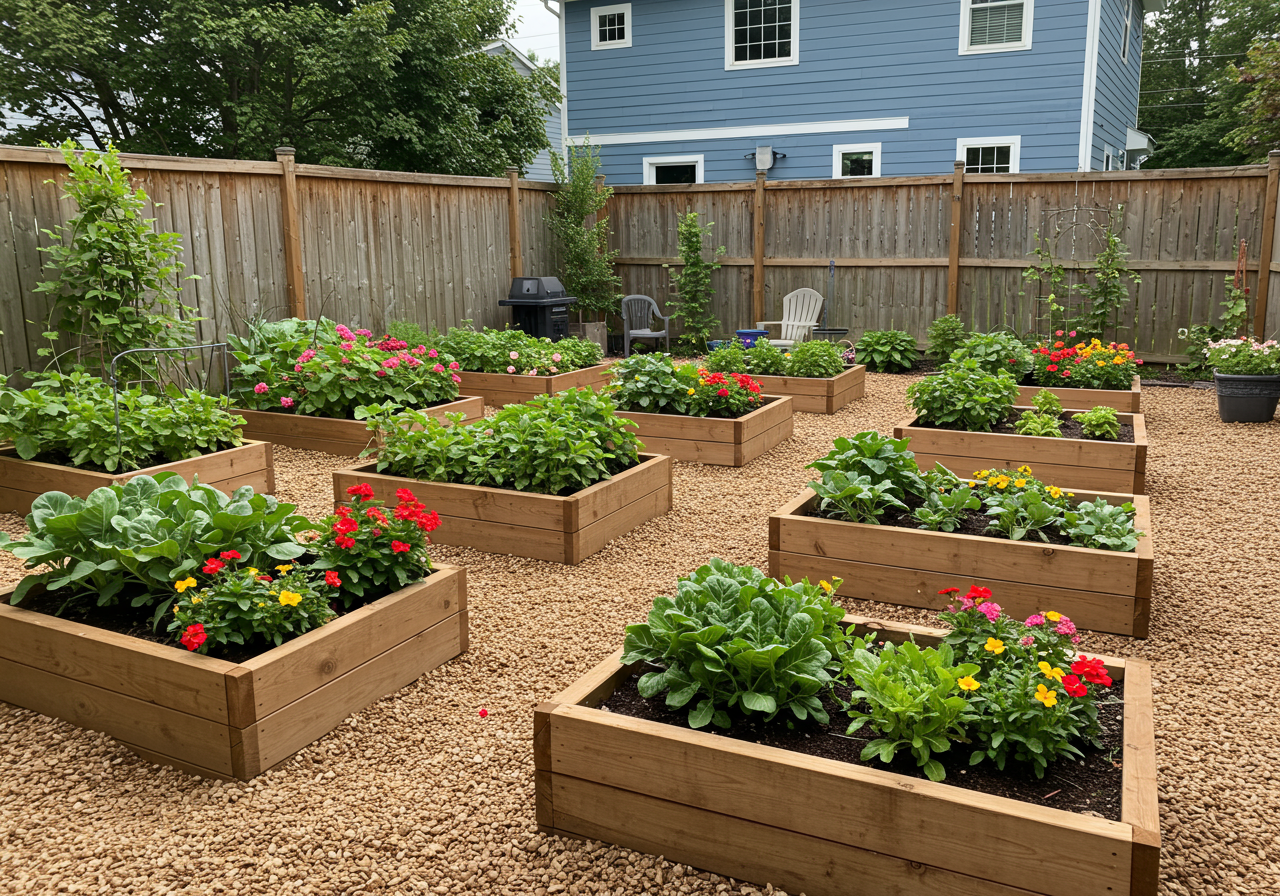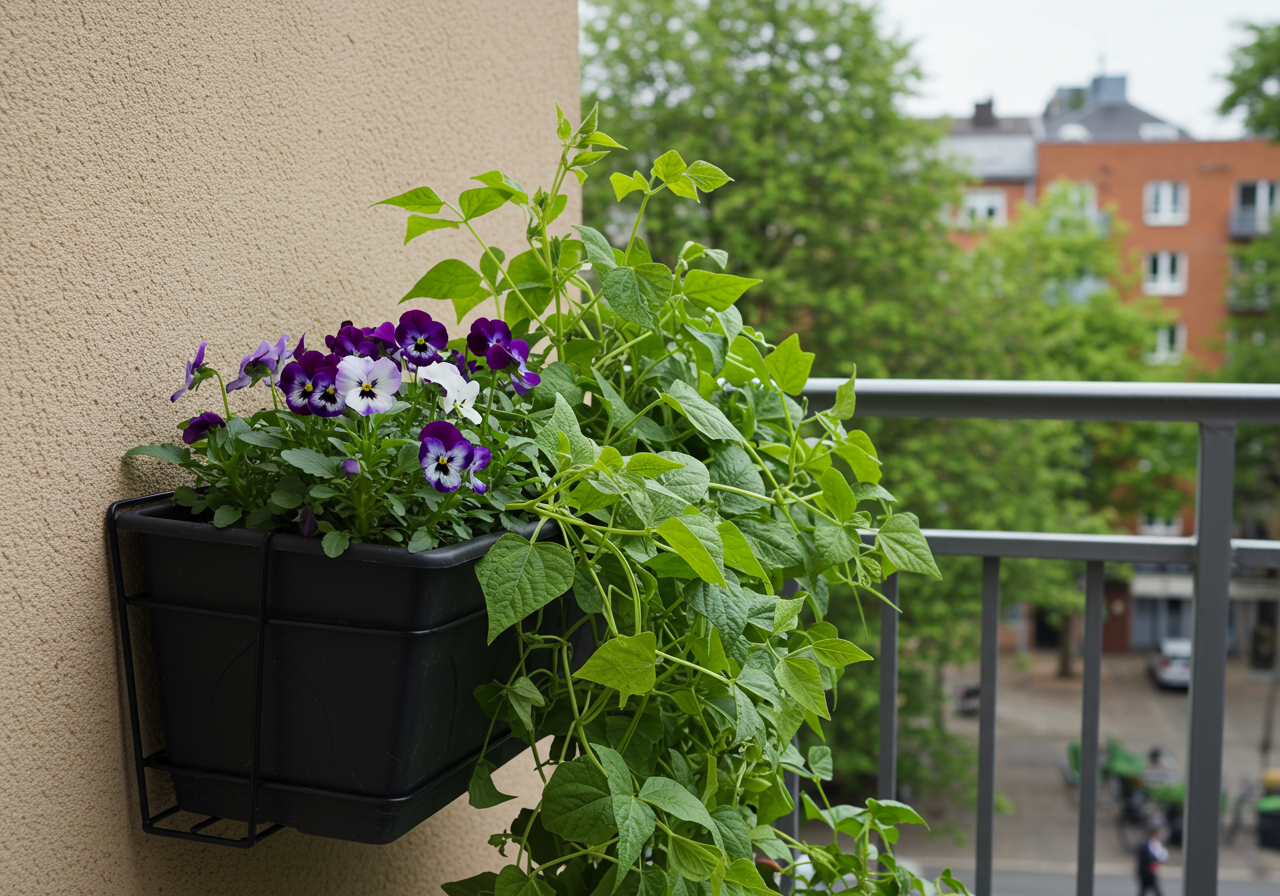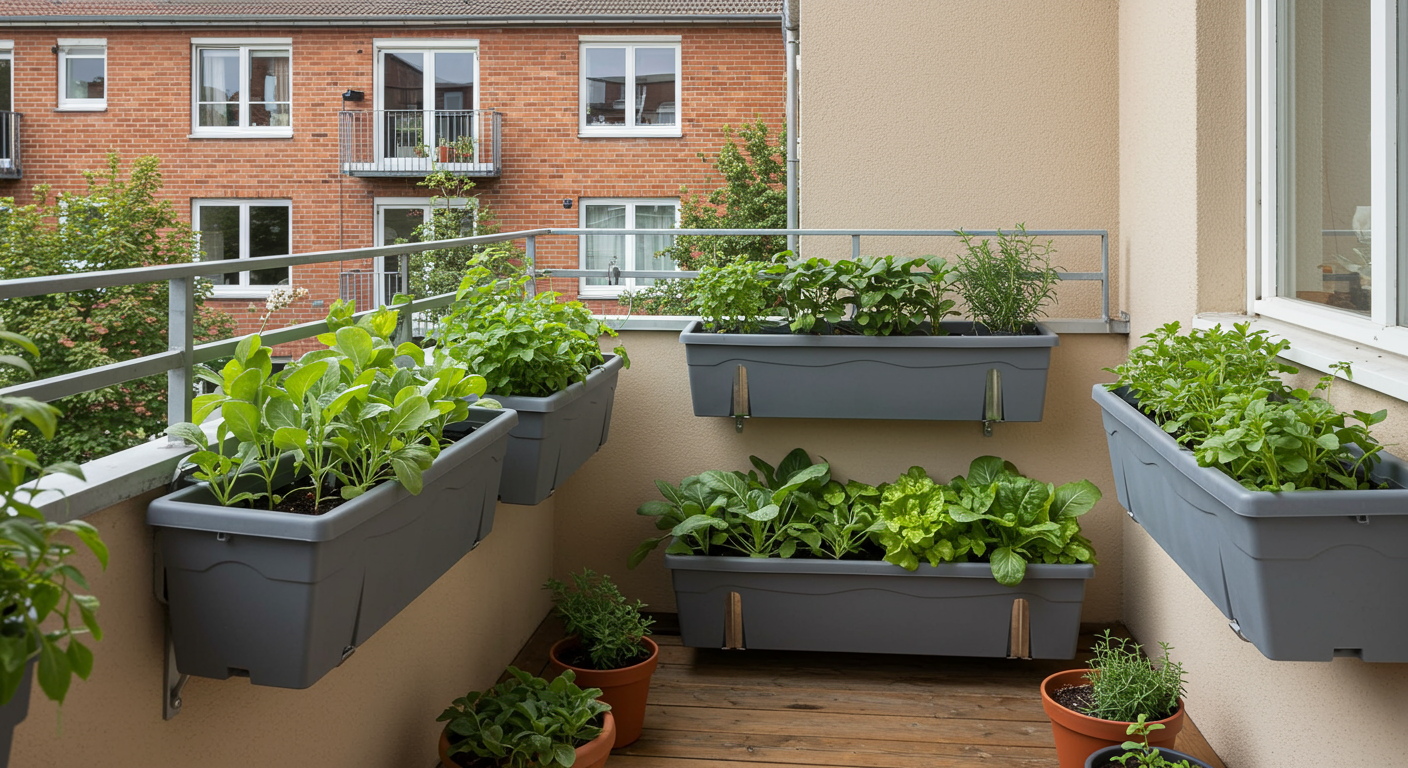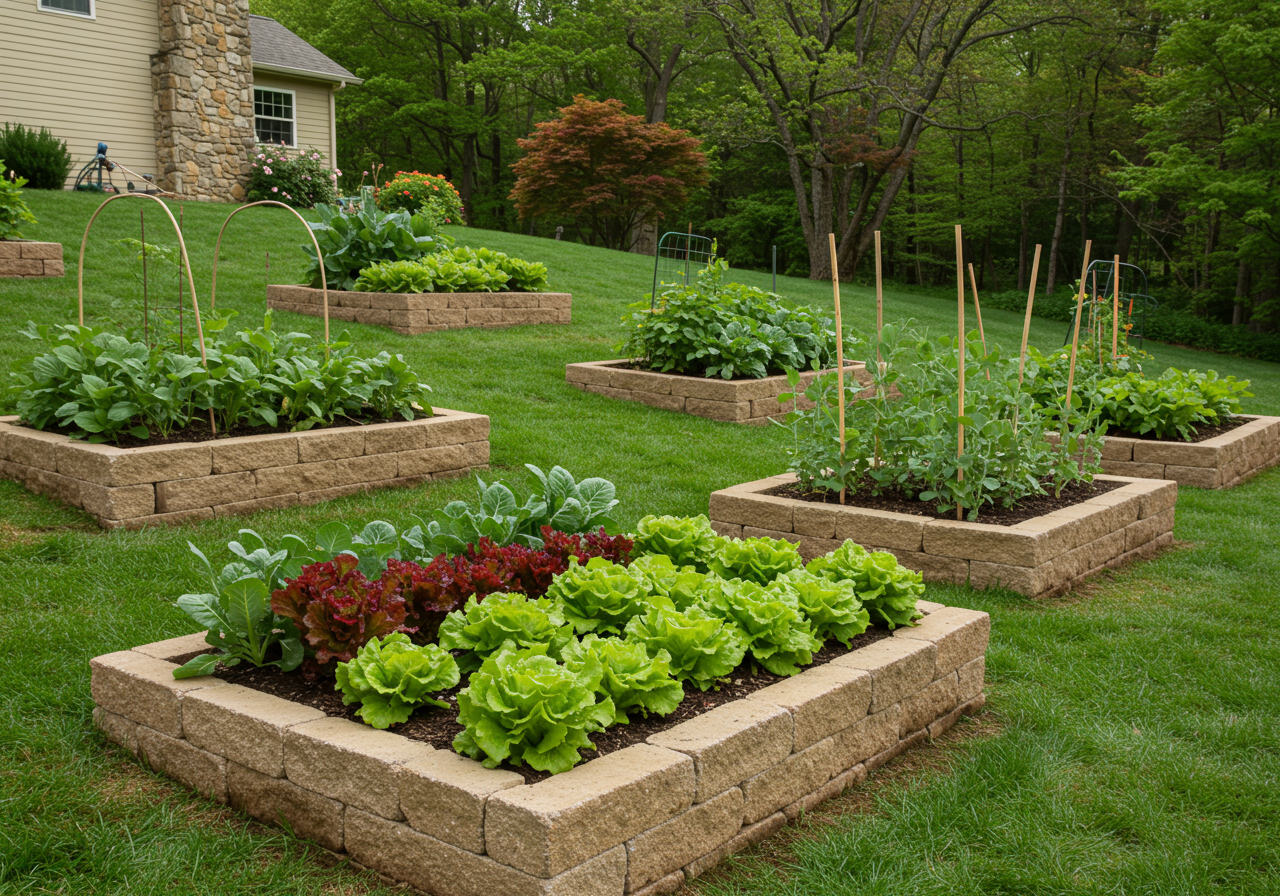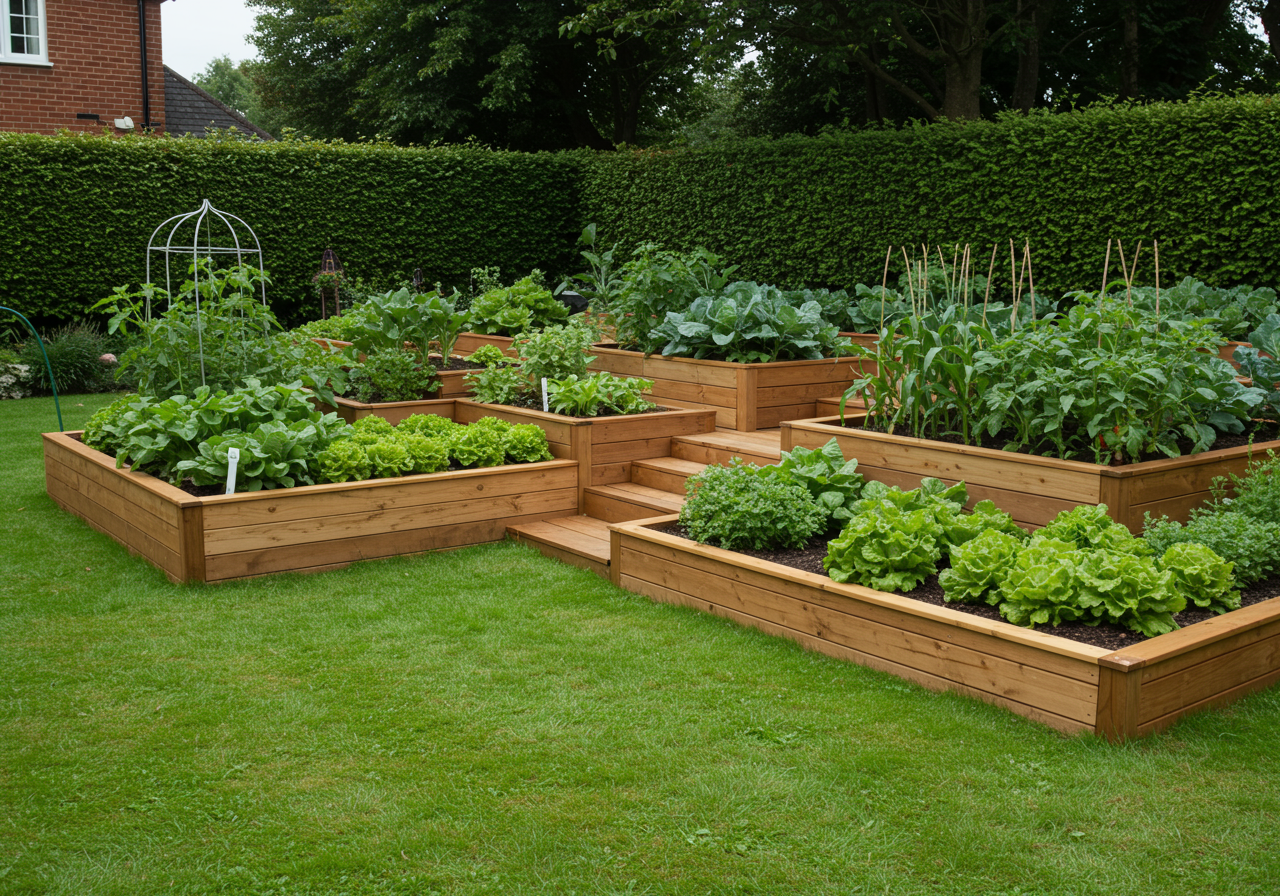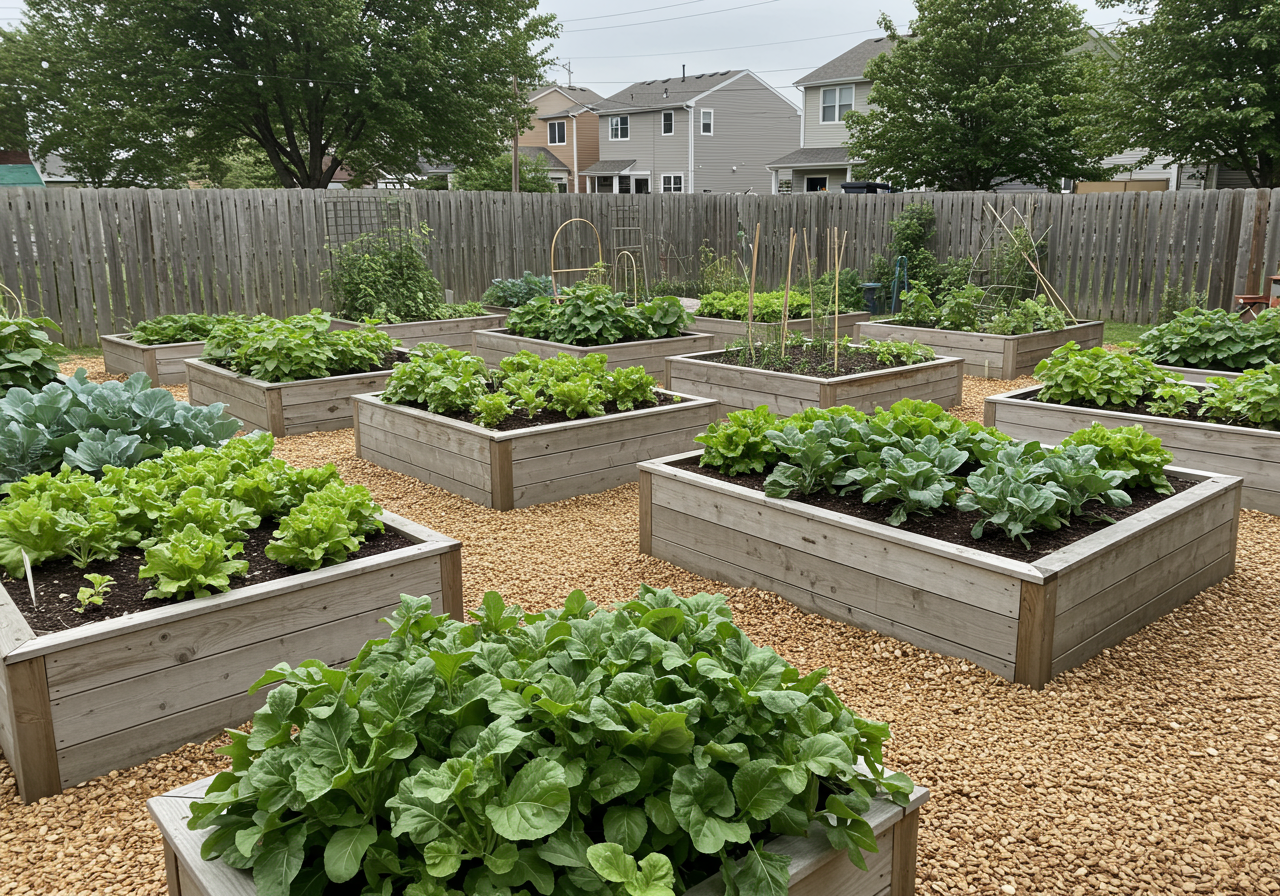With some smart planning, small outdoor spaces can easily be transformed into beautiful, productive fruit and veggie gardens. Come take a look at 10 inviting edible gardens tucked into front yards, side yards, decks and balconies that show how you can really do a lot with modest square footage.
Stock Tank for Crops
Galvanized metal stock tanks provide small-space kitchen gardens a deep soil reservoir for planting. This opens up growing options for larger-scale crops like artichokes, indeterminate tomatoes or dwarf fruit trees and allows for more layered planting in a single container. In this Oakland, California, backyard, a stock tanks holds tomatoes, mixed herbs and strawberries.
Front Yard Beds
Sitting pretty outside a contemporary home in Melbourne, Australia, a trio of raised beds filled with frilly lettuce heads, broccoli and salad greens look just as ornamental as more traditional flowers beds. While we usually think of placing kitchen gardens in the backyard, a sunny front yard can also be a great spot for growing fruits and veggies, and can also help maximize space in smaller lots.
Contained Kitchen Garden
Measuring just 12 by 13 feet, this veggie garden in Newton, Massachusetts, is a great size for having plenty of produce without too much maintenance. The owners circled the veggie garden with a 4-foot-tall fence made of hardware cloth stretched between cedar posts, and they planted the raised beds with tomatoes, broccoli, beans, herbs and flowers.
These Australian-made modular raised beds, made of cold-rolled galvanized and coated steel sheeting, are perfect for fitting into small spaces and unusual configurations. They’re durable, rust-resistant and come in a variety of sizes.
Edible Room Divider
Even though most of the square footage of this 540-square-foot urban backyard in Seattle is taken up by a raised deck and lower fire pit, the landscape architect came up with a smart way to carve out growing space for seasonal veggies and herbs. A series of triangular raised beds act as an outdoor room divider and ease the grade change between the deck and the lower fire pit area.
The triangular shape of the beds keeps the center of the lower patio open, and generous end caps to the beds double as additional seating.
Classic Raised Beds
A pair of 8-by-4-foot raised beds tucked into the backyard of a 1950s beach cottage in Manhattan Beach, California, grows supplemental veggies and herbs for a family of four. “We grow everything from tomatoes, cucumbers, watermelon, peas and even corn,” says homeowner Julie McMahon. The raised beds are hooked up to a drip irrigation system set on a timer to help cut down on maintenance and ensure consistent watering.
Mixed Veggies and Flowers
Crops and seasonal flowers grow side by side in this Seattle gravel garden punctuated by raised beds and in-ground planting beds. The flowers stand out like islands of color and attract beneficial pollinators to the veggies.
Small-space planting tip: Mixing good-looking edibles — like striking artichokes, beans grown on a tidy trellis and leafy greens like chard, kale and mustards — enhances the overall look of the ornamental bed and extends growing space for food.
Window Box Edibles
Proving that no space is too small for veggies, this window box on a Northern California balcony is filled with bush beans and pollinator-attracting flowers.
The window boxes are cleverly mounted outside of the deck rails, so they don’t take up any square footage. While not all crops would tolerate such a shallow growing area, plants like bush beans, lettuces, radishes, strawberries and herbs could all work well if given consistent water.
Front Yard Farm
Chunky stone raised beds march down a slope in this front yard in Portland, Oregon. Bursting with foliage, including multicolored lettuces, mustard greens, collards, kale and peas twining up a trellis, the beds are as decorative as ornamental landscaping and offer more reward for the effort.
Note: Not all municipalities allow for planting veggies in the front yard. Check before planting, and always keep your plot neat.
Note: Not all municipalities allow for planting veggies in the front yard. Check before planting, and always keep your plot neat.
Vertical Veggies
A vertical planting system edging a backyard in Sydney offers a solution for planting in a small space. The tiered system provides planting troughs for lettuces, which are fertilized by an aquaponics system in the built-in bench. The combination makes a lush, green backdrop that acts as a stunning focal point of the yard.
Multi-level Raised Beds
Incorporating a split-level system in raised beds makes for a more dynamic design in a small space by introducing more height variation. Use the different levels to corral crops based on mature heights — planting tall vegetables like tomatoes and corn to the back of the double-height bed where they will benefit from a larger soil reservoir. Plant lower-growing crops like lettuces and herbs in the lower front raised beds.
